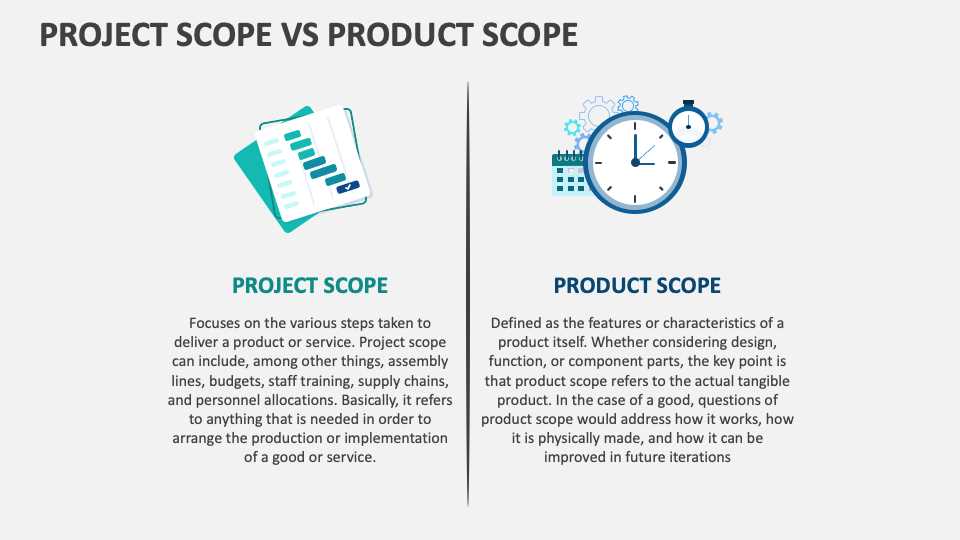What is Project Scope?
Project scope refers to the specific goals, deliverables, tasks, and timeline that define the boundaries and objectives of a project. It outlines the work that needs to be done to successfully complete the project and achieve its desired outcomes.
Key Components of Project Scope
Project scope includes several key components that help define the project’s boundaries and objectives:
- Project Objectives: The desired outcomes or goals that the project aims to achieve.
- Deliverables: The tangible or intangible products, services, or results that the project will produce.
- Tasks and Activities: The specific actions and steps that need to be taken to complete the project.
- Timeline: The schedule or timeline for completing the project and its various tasks.
- Constraints: The limitations or restrictions that may impact the project, such as budget, resources, or time.
- Assumptions: The underlying assumptions or conditions that are taken for granted in the project planning process.
- Risks: The potential uncertainties or threats that may arise during the project and impact its success.
Overall, project scope provides a roadmap for the project team and stakeholders, ensuring that everyone is aligned and working towards a common goal. It helps manage expectations, allocate resources effectively, and deliver successful outcomes.
What is Product Scope?

The product scope refers to the features, functions, and characteristics of a product or service that is being developed or delivered as part of a project. It defines what the end result of the project will be and what it will include.
When determining the product scope, it is important to consider the needs and expectations of the stakeholders, as well as any constraints or limitations that may affect the development or delivery of the product. This includes considering factors such as time, budget, resources, and technical requirements.
Defining the Product Scope
Defining the product scope involves clearly identifying and documenting the specific features, functions, and characteristics that the product or service will have. This includes determining the purpose of the product, the target audience, and any specific requirements or specifications that need to be met.
It is also important to consider any potential changes or updates that may need to be made to the product in the future. This can help ensure that the product is designed and developed in a way that allows for flexibility and scalability.
Managing the Product Scope
Managing the product scope involves ensuring that the product is developed and delivered according to the defined scope. This includes monitoring and controlling any changes or deviations from the original scope, and making adjustments as necessary.
Effective product scope management requires clear communication and collaboration between the project team, stakeholders, and any other relevant parties. It also involves regularly reviewing and updating the product scope documentation to reflect any changes or updates that have been made.
- Regularly reviewing and updating the product scope documentation
- Communicating and collaborating with stakeholders
- Monitoring and controlling changes or deviations from the scope
- Making adjustments as necessary
By effectively managing the product scope, project teams can ensure that the final product meets the needs and expectations of the stakeholders, while also staying within the constraints and limitations of the project.
The Difference Between Project Scope and Product Scope
Project scope refers to the work that needs to be done to deliver a specific outcome or result. It defines the boundaries of the project, including the objectives, deliverables, tasks, and resources required. Project scope answers the question, “What needs to be done to complete the project?” It focuses on the project’s goals and the specific work required to achieve them.
On the other hand, product scope refers to the features, functions, and characteristics of the end product or deliverable. It defines the requirements and specifications that the final product must meet. Product scope answers the question, “What will the end product look like, and what will it be capable of doing?” It focuses on the characteristics and qualities of the final product.
The key difference between project scope and product scope is their focus. Project scope is concerned with the work needed to complete the project, while product scope is concerned with the features and characteristics of the final product. Project scope is more about the process, while product scope is more about the outcome.
Another difference is their level of detail. Project scope tends to be more detailed and specific, as it outlines the tasks and activities required to complete the project. Product scope, on the other hand, is broader and focuses on the overall characteristics and functionality of the end product.
Clear Communication
Resource Allocation
Risk Management
Customer Satisfaction

Emily Bibb simplifies finance through bestselling books and articles, bridging complex concepts for everyday understanding. Engaging audiences via social media, she shares insights for financial success. Active in seminars and philanthropy, Bibb aims to create a more financially informed society, driven by her passion for empowering others.
